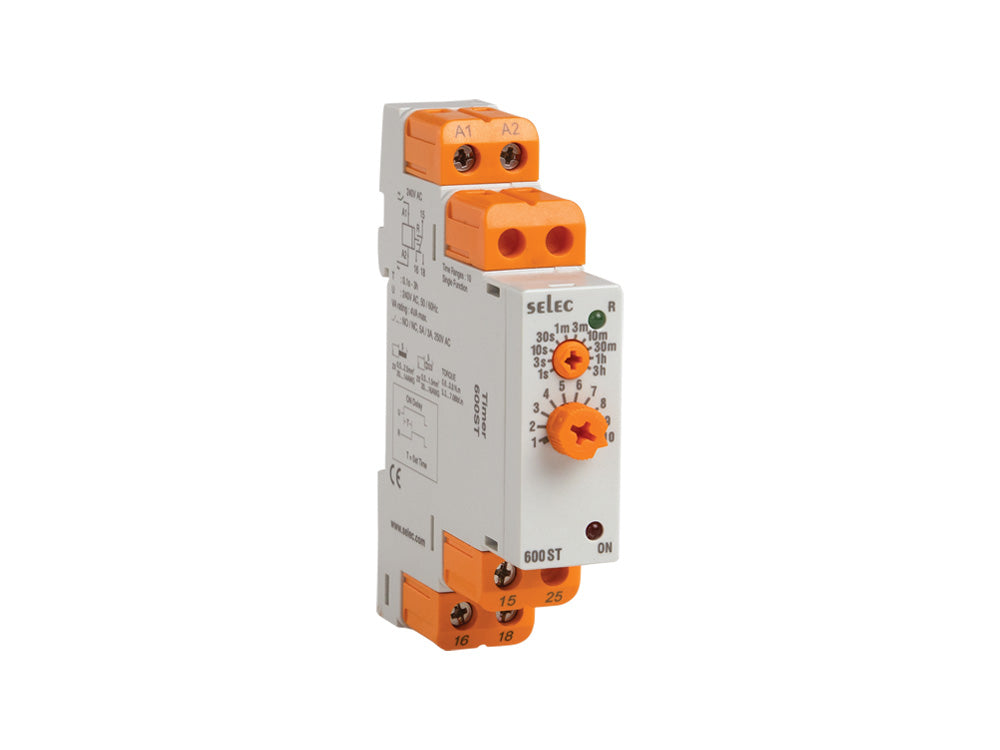
All about electronic timers
Share
Timers | All you need to know: Types, Operating Mode, Applications
Timers are used to measure specific time intervals. But in electrical engineering terms, timers are also referred to as counters often. The timer is a component which is extensively used in different embedded systems. They are used to keep a record of time for different events occurring in the embedded systems. The timer is a simpler binary counter which is configured in a circuit or a system as per the need to count the pulses in the system. The value of the timer is automatically set to zero once it is at its maximum value. Once the maximum value for the timer is reached, an interrupt is generated with an overflow flag. The timer can be used to measure the time elapsed or the external events occurring for a specific time interval. They are used to maintain the operation of the embedded system in sync with the clock. The clock can be an external clock or the system clock. Timers are used for various applications in circuits or embedded systems such as to generate baud rates, measuring time generating delays and many more. The loop iterating methodologies are very difficult and they can iterate the loops in the system for a specific range of cycles. For the iteration of loops perfectly and systematically timer/counters are used. The timer is very easy to be program instead of different programming practices for loop iterations. The timer counts the peripheral clock cycles or it can count the clock cycles of the externally supplied clock. Clock pulses can be also generated with the help of timers which is also called the Baud Rate of the serial communication.
Types of Timers
There are two main categories in which timers are classified:
-
Analog Timers:
- The analog timers are those timers that are set up by knobs and their output is observed with an analog scale. The timing functionalities and scale of an analog timer are easily adjusted with the help of switches mounted on the front side of the timer.
-
Digital Timers:
- Digital timers are adjusted and controlled with the help of digital inputs and their output is also observed with the digital scales. The different buttons are used to set up the timing and set points of a timer. The output is displayed through the LCD mounted on the timer.
Operating Mode
There are 4 basic operating modes for a timer which are:
- ON-Delay Operation.
- OFF-Delay Operation.
- Flicker Operation.
- Interval Operation.
ON-Delay Operation:
In this mode of operation, the timer counts the output of the system after a specific interval of the specified delay. The timer is named an ON delay timer as there is some delay before the input signal is turned ON. ON delay timer mode of operation is used with the automated machines.
OFF-Delay Operation:
In OFF delay operation, the timer starts its operation as soon as the input starts, and the output is also started but the output of the timer is stopped once the set time of the timer has expired. The set time of the timer is calculated once the input is turned OFF. The basic example of an OFF delay timer is the gate indicator light in cars.
Applications of Timers
Timer’s circuits have different applications in different systems. Timers are used for various purposes in the circuit. In a counter circuit, the major part of the circuit is a timer. The speed of the circuit can be changed by changing the timer’s time period. Timers are used to generate the desired delays, baud rates are also generated with the help of timers. Timers are also used as reference signal generators. Different reference pulses are generated with the help of timers. A number of flip flop circuits are triggered by different timers. The event sequence is easily controlled with the help of timers. A timer has various applications which are extensively used in daily life practical devices from the basic household level to a large industrial level. Each timer has its own applications and characteristics.
